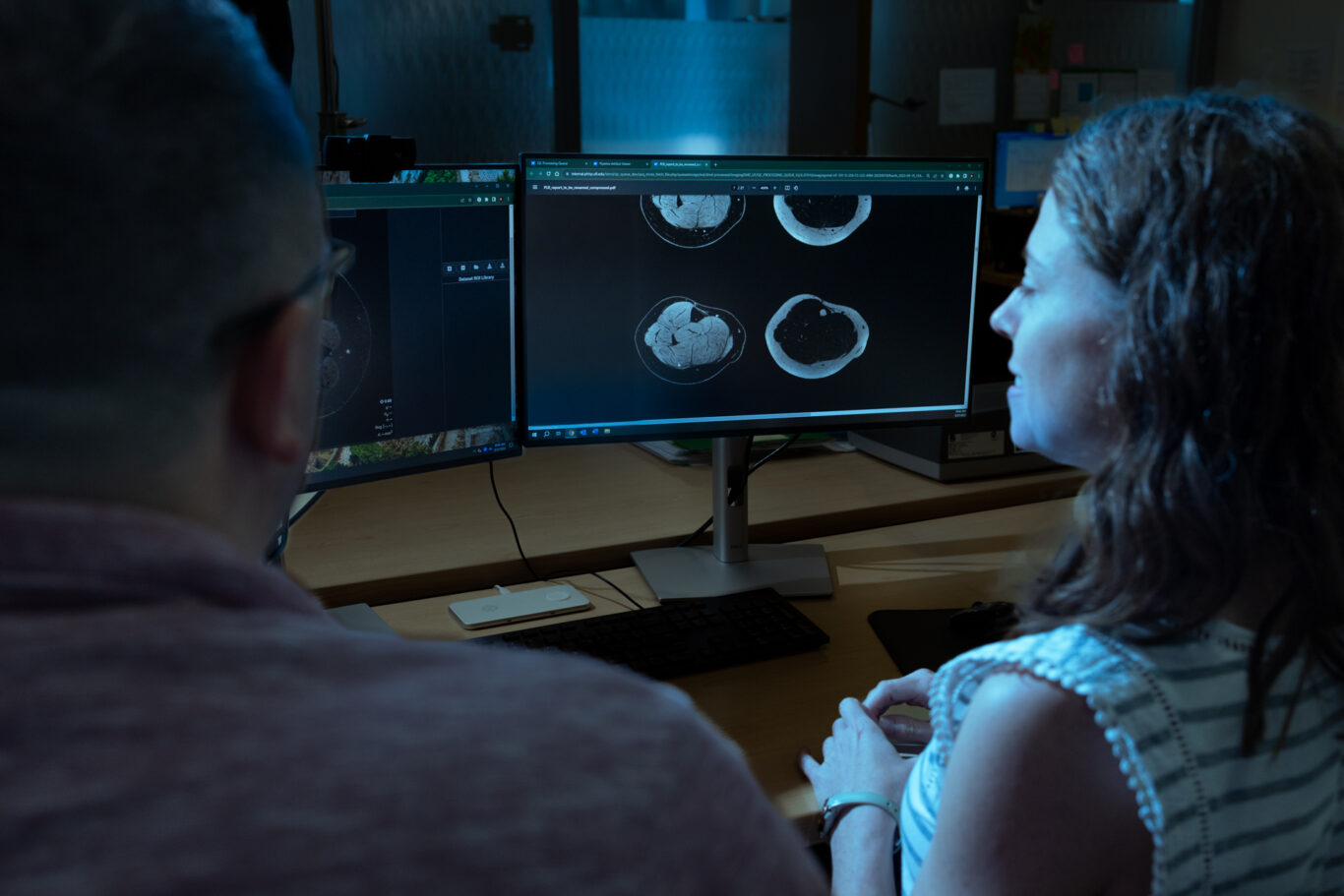Imaging technology has advanced our knowledge of Becker muscular dystrophy (BMD) and Duchenne muscular dystrophy (DMD). Through our study, ImagingNMD is laying the foundation for new ways to measure Becker disease progression and is helping to develop successful pharmaceutical clinical trials using MRI.
ImagingNMD’s very own Dr. Vandenborne and Dr. Walter were recently interviewed and shared their insights on how MRI is improving our understanding of muscular dystrophy. Today, we’ll share with you the highlights of the interview and the progress that is being made through imaging research.
How We Use MRI to Track Progression in Becker Muscular Dystrophy
For many years now, imaging has been used to look at patterns of muscle involvement in neuromuscular diseases, but extracting important quantitative results from MRI across time is a recent development in this rare condition. Our research has progressed to the point that we can tell patients whether they have BMD or DMD how much the disease progresses from year to year in their muscles.
While MRI cannot detect or measure dystrophin, it does an excellent job of determining the fat-muscle ratio in muscles of people with muscular dystrophy. Our research helps us quantify the rate of fat infiltration to give an accurate representation of disease progression to both the patient and their care team.
The Signs of Disease Progression Shown by an MRI
MRI can also show the following signs of disease progression:
- Muscle damage
- Inflammation
- The replacement of muscle by non-contractual tissue
- Impact of muscle replacement on function
The Advantages of MRI over Other Tracking Methods
There are several advantages to tracking muscular dystrophy with MRI over more traditional methods. First, MRI is completely noninvasive—unlike other methods such as biopsies. This makes it much easier for anyone already dealing with muscular dystrophy, but especially for children. Additionally, MRI is safe because it does not use ionizing radiation.
A common issue healthcare teams have faced is that functional tests may be variable and can be influenced by motivation and bias. On the other hand, MRI removes any external factors that may influence the results. Dr. Vandenborne gave the following example, “If you have to test a five-year-old little boy and see how far they can walk during a certain time frame, they sometimes have a good day and a bad day. So motivation becomes a really important factor that can influence the results. In contrast, [MRI] images have the advantage that they are really objective. You take an image, and the results of the data are what they are. So it’s an unbiased way to capture disease progression.”
Impact of MRI on Research and People’s Lives
Beyond the ability to track disease progression, MRI can also provide vital data and information to researchers that are developing and testing new therapies. They can use MRI to track how the muscles react to the drug and if the treatment helps slow down disease progression. Also, MRI gives researchers an inside look at the natural progression of Becker muscular dystrophy and Duchenne muscular dystrophy—providing powerful context for current and future treatments.
What to Expect as an iNMD Study Participant
At iNMD, we want all our study participants to enjoy their experience with us. Dr. Walter had this to say about the iNMD experience: “We get to see the participants come year after year. They get to know team members. We look forward to their annual returns, and many of our team members have become quite good friends with our participants. I think it’s just been wonderful from both sides—each year everyone gets a little bit more comfortable, and it’s really a straightforward and fun thing to do.”
Dr. Vandenborne had to agree—the sense of community that comes from our study is undeniable. “It’s a community supporting individuals with Becker muscular dystrophy and Duchenne,” She said, “We always look forward to the visits and know families quite well by now. We are all part of the same community.”
Help Us Further Our Understanding by Joining iNMD’s Study
Historically, Becker muscular dystrophy (BMD) has been largely neglected in therapeutic development. If you or someone you know has Becker Muscular Dystrophy, you have the unique opportunity to help bring greater understanding to this rare disease. By signing up for our observational trial, you enable researchers to gain new insights into the progression of BMD. Our online screener can help determine if the study may be a good fit for you or your loved one in just minutes.





